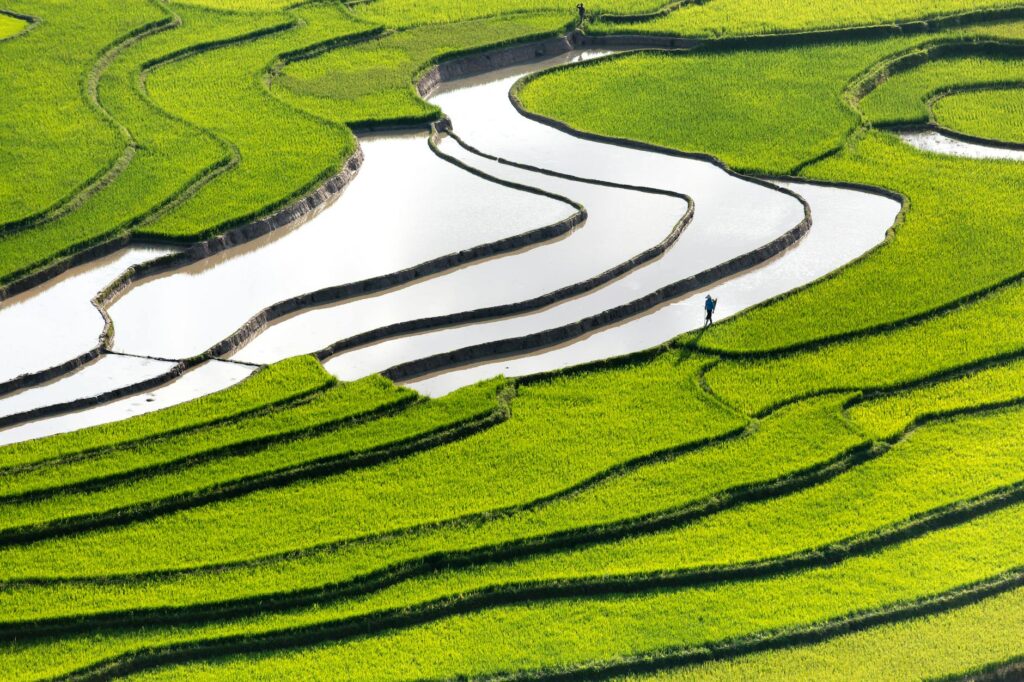Drip irrigation is a highly efficient method of watering crops, gardens, and landscapes, allowing for precise water application directly to the plant roots. As water conservation becomes increasingly crucial in agriculture and horticulture, understanding the different types of drip irrigation systems can help you choose the right one for your needs. In this blog post, we’ll explore the various types of drip irrigation systems, their benefits, and how they can enhance your gardening or farming practices.
What is Drip Irrigation?
Before diving into the types, let’s clarify what drip irrigation entails. Drip irrigation systems deliver water directly to the base of plants through a network of tubing, pipes, and emitters. This method minimizes water wastage, reduces weed growth, and prevents diseases by keeping foliage dry.
Key Components of Drip Irrigation Systems
- Mainline: The primary pipeline carrying water from the source.
- Submainline: Branches off the mainline to distribute water to different areas.
- Emitters: Devices that control the flow of water to the plants.
- Tubing: Flexible pipes that carry water to the emitters.
- Filter: Prevents clogging of emitters by filtering out impurities.
- Pressure Regulator: Ensures consistent water pressure for optimal performance.
Types of Drip Irrigation Systems
1. Surface Drip Irrigation
Surface drip irrigation is the most common type of drip system. It involves laying drip lines on the soil surface, with emitters spaced according to the plant needs. This system is highly customizable and suitable for a variety of crops.
Advantages:
- Easy to install and manage.
- Effective for row crops, orchards, and gardens.
- Reduced evaporation and runoff.
Disadvantages:
- May require regular maintenance to prevent clogging.
- Vulnerable to damage from surface activities like tilling.
Learn more about surface drip irrigation here.
2. Subsurface Drip Irrigation
Subsurface drip irrigation involves burying the drip lines below the soil surface, which delivers water directly to the root zone. This method is ideal for high-value crops and can be used in areas with limited water supply.
Advantages:
- Minimizes evaporation and weed growth.
- Reduces labor costs associated with weeding and watering.
- Maintains soil moisture evenly.
Disadvantages:
- Higher installation costs.
- Requires careful planning to ensure proper installation depth.
Discover more about subsurface systems here.
3. Portable Drip Irrigation
Portable drip irrigation systems are designed for flexibility and can be moved from one area to another. They typically consist of lightweight tubing and emitters, making them perfect for small gardens or temporary setups.
Advantages:
- Easy to set up and relocate.
- Cost-effective for small-scale applications.
- Ideal for seasonal crops and gardening.
Disadvantages:
- Less durable than permanent systems.
- Requires more frequent adjustments and monitoring.
Find out more about portable systems here.
4. Drip Tape Irrigation
Drip tape is a thin, flat tube with pre-drilled emitters, commonly used in vegetable production. It is lightweight and designed for easy installation, making it a popular choice for farmers.
Advantages:
- Low cost and easy to install.
- Efficient for row crops and large areas.
- Reduces water consumption and labor.
Disadvantages:
- Limited lifespan compared to other drip systems.
- Can be prone to clogging.
Learn more about drip tape irrigation here.
5. Micro Drip Irrigation
Micro drip irrigation is suitable for smaller plants and containers, using very low flow rates. This system is often used in greenhouses, nurseries, and flower beds.
Advantages:
- Highly precise water application.
- Perfect for delicate plants and seedlings.
- Can be integrated with automated systems.
Disadvantages:
- More complex to design and set up.
- Higher upfront costs for equipment.
Explore micro drip options here.
Benefits of Drip Irrigation Systems
- Water Efficiency: Reduces water usage by delivering it directly to the root zone.
- Improved Crop Yield: Consistent moisture leads to healthier plants and higher yields.
- Weed Control: Watering only the plants minimizes weed growth.
- Soil Preservation: Reduces soil erosion and maintains soil structure.
Frequently Asked Questions (FAQ)
Q1: How much water can a drip irrigation system save?
A drip irrigation system can save up to 50% more water compared to traditional watering methods, depending on the crop and environmental conditions.
Q2: Can drip irrigation be used for all types of plants?
Yes, drip irrigation is versatile and can be used for various types of plants, including vegetables, fruits, and ornamental plants.
Q3: What maintenance is required for a drip irrigation system?
Regular maintenance includes checking for clogs, inspecting emitters, cleaning filters, and ensuring that the system is functioning properly.
Q4: Is it expensive to install a drip irrigation system?
The installation cost varies based on the system type and size. While initial costs can be higher than traditional methods, the long-term water savings often offset the investment.
Q5: Can I automate my drip irrigation system?
Yes, many drip irrigation systems can be automated with timers and sensors, allowing for efficient and hassle-free watering.
Conclusion
Choosing the right type of drip irrigation system can significantly impact your gardening or farming success. From surface and subsurface systems to micro and portable options, each has its unique benefits tailored to specific needs. By understanding these types and their applications, you can conserve water, improve crop yields, and maintain a healthy garden or farm.
For more detailed insights on drip irrigation systems, explore these external links:
By investing in the right drip irrigation system, you’re not just enhancing your growing practices; you’re also contributing to sustainable water usage in agriculture. Happy gardening!
Originally posted 2024-10-01 14:44:31.

